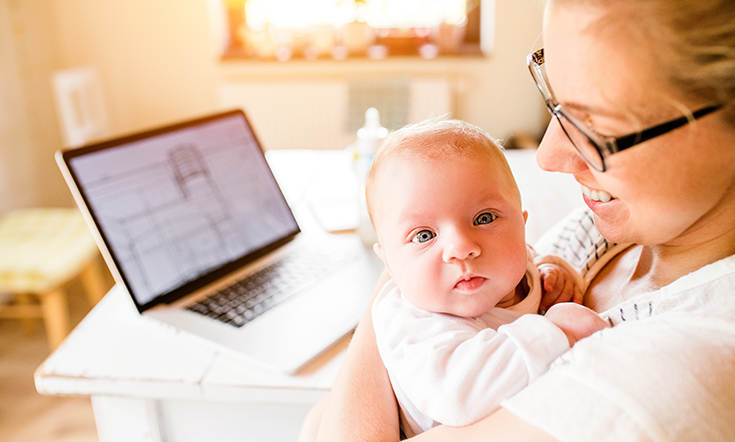

Returning to work after maternity leave is quite an emotionally fraught time for a mother. Even if you imagined that you would return to full time work after a year at home, many mothers don’t feel ready to do this, so often seek a part time arrangement, either permanently or as a way of easing into life as a working mother.
However your story unfolds, one thing that is consistent across many families is an increase in expenses, primarily generated by childcare costs. Combine this with an often reduced income resulting from part-time hours, retuning to work can be a financially frustrating time for parents.
The first thing you need to do, before you reach the end of your maternity leave, is discuss your return to work with your employer. Let them know as early as you can if you would like to negotiate part time hours, or flexible working arrangements.
Once you have worked out how many hours you will be working, you can set about looking for appropriate childcare and reorganising your family budget to suit your change in circumstances. For many families a return to work, even in a part time arrangement, will usually mean the financial pressure valve will be slightly released. But don’t get over excited by all this extra cash coming in, as you’ll probably find that a portion of it will go straight out again to cover childcare fees, travel to work, and appropriate work clothes.
Here are some things to think about doing while you are still on maternity leave:
- Set aside an afternoon to either visit Centrelink, or spend an afternoon on the phone. You should have details of your income and your partners income available to give to Centrelink so they can accurately tell you what assistance may be available to you, both in the form of Family Assistance payments, Child Care Benefit and Childcare Rebate.
- Centrelink will be able to provide you with a percentage amount of Childcare Benefit that you will be given to help reduce your childcare expenses. Keep in mind that most childcare facilities will charge more than the government allows for in this percentage amount. For example, if your percentage is 40 percent, and your childcare daily rate is $120 – you won’t automatically get 40 percent off $120. You will need to speak to the childcare facility and ask them to provide an estimate for you, based on your percentage.
- Childcare Rebate is paid separately from Child Care Benefit and this helps with the out-of-pocket expenses of childcare. You can opt to have this paid directly to the centre your child attends, or you can have it paid to you.
- Start thinking about your child’s future education. If you choose to return to work, it’s worth setting aside a portion of your wages in an education fund. For around $2 a day, ASG offer a variety of education funds to help towards the cost of education that will give you peace of mind now, and greater opportunity to choose the best education for your child in the future.
It is worth doing the sums on returning to work, as for some women it turns out not to be financially viable to return to work. While you consider the numbers, also consider the other reasons you may be going back to work. Either way, going back to work after having a baby represents a significant change, so make sure you make your decision armed with all the facts and you’ll be better placed to make the right decision for you and your family.























